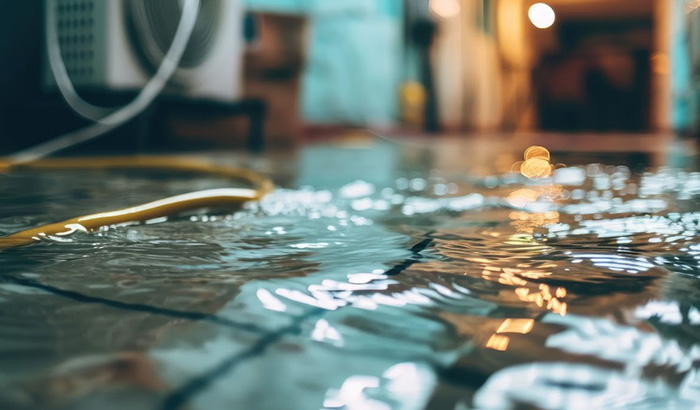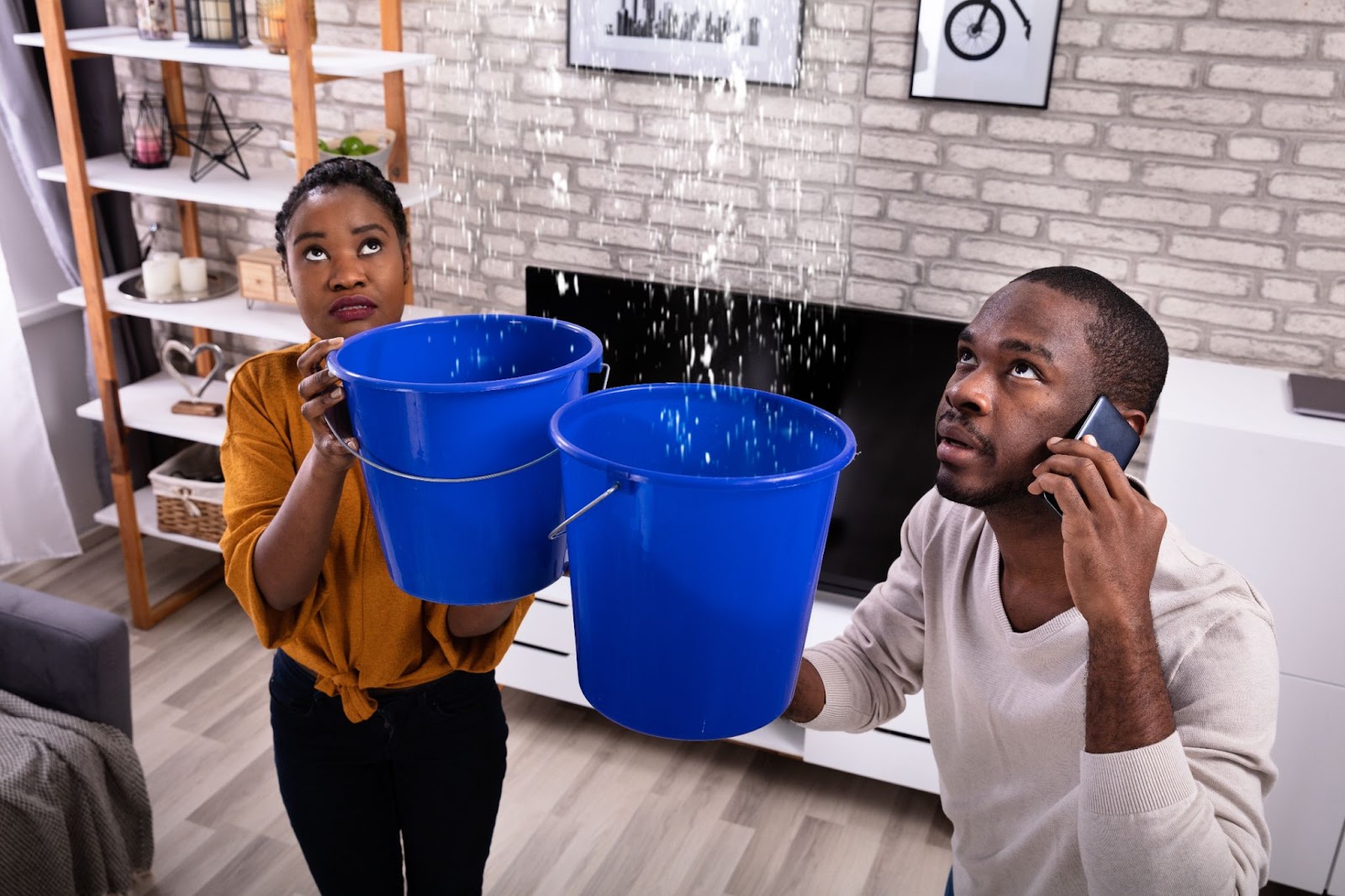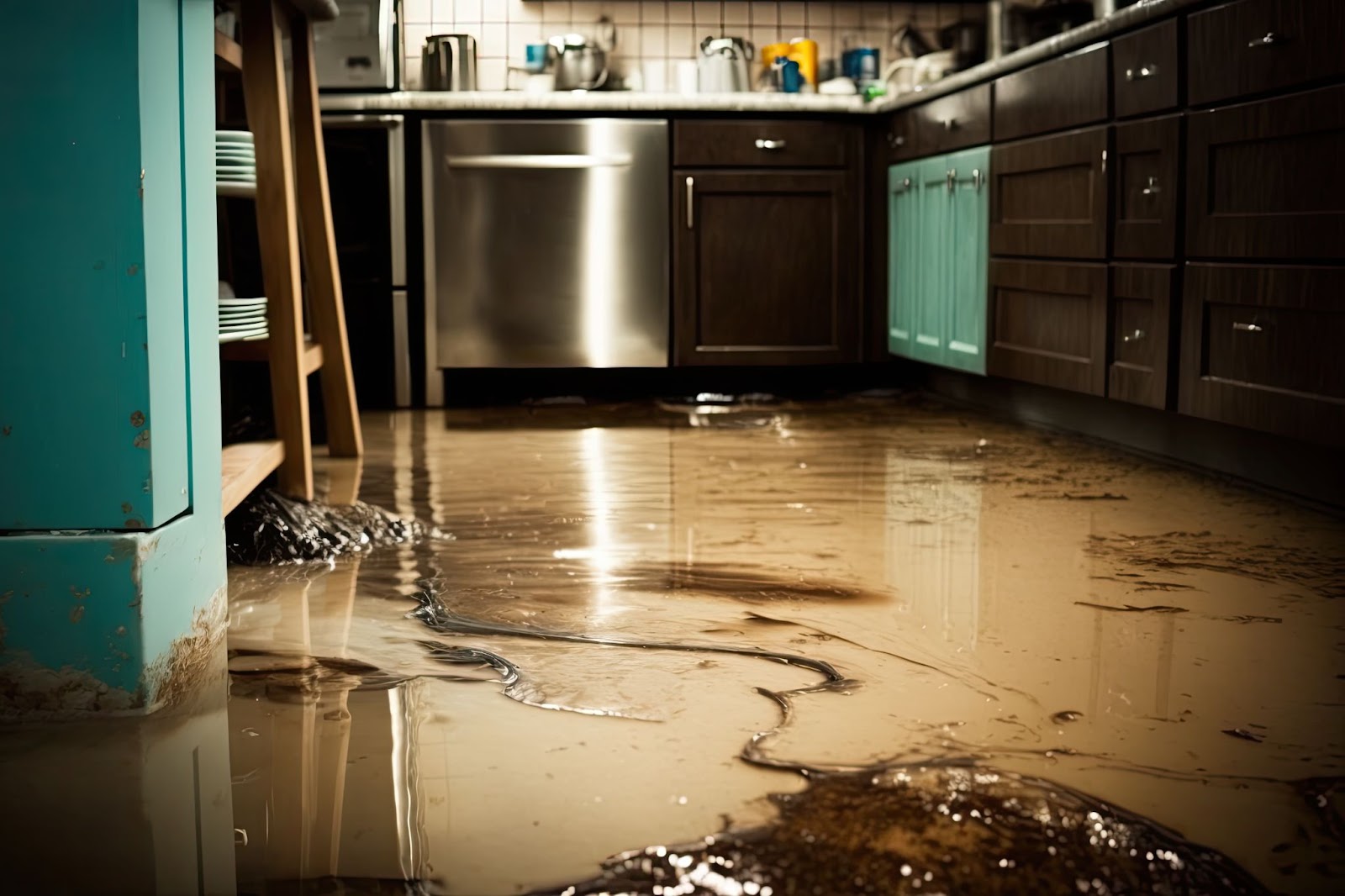The aftermath of a flood or leak, with its water damage, leaves any homeowner in a state of disarray. Navigating the chaos requires more than a mop and a bucket — it demands professional expertise.
Before you are able to piece back the comfort of your abode, understanding the intricate process of water damage restoration is crucial.
Water damage restoration is a complex undertaking involving several meticulous steps. It is a journey of transformation that sees a property return from the ruins of misfortune back to its pre-damage state. Each phase of the process, including mold remediation and the restoration of structural integrity, plays a pivotal role in a successful recovery.
In the following article, we will delve into what to expect when enlisting professional water damage restoration services, the importance of their role, the costs involved, and how to navigate the often-dreaded dealings with insurance companies. We will also discuss protective measures to curtail future incidents, saving homeowners from the recurring nightmares of water-related disasters.
Water damage restoration process
When faced with any level of water damage in your property, understanding the water damage restoration process is key to swiftly and effectively returning your premises to its pre-loss condition.
Professional water damage restoration companies specialize in this process, which typically unfolds in several stages: assessment, water removal and extraction, drying and dehumidification, mold remediation, and, finally, restoring structural damage.
It’s a meticulous process that involves the concerted efforts of experienced professionals to manage the damage and help property owners recover from an often distressing event.
Assessing the damage
Upon contacting a reputable water restoration company, expect a rapid response team to arrive at your property to assess the extent of the water damage.
This crucial first step involves a thorough inspection to identify the water source and classify the contamination level of the water — whether it’s clean water from a burst pipe, gray water from appliances like washing machines, or black water from sewage backups.
The assessment will guide the subsequent response to manage the damage and prevent further issues such as mold growth.
Water removal and extraction
Following the assessment, the immediate focus is on removing any standing water. Using powerful pumps and vacuums, restoration professionals work diligently to perform water extraction, reducing the likelihood of ruined furnishings and structural damage.
Speed is essential here, as prolonged exposure to water results in more significant damage to porous materials such as wood, drywall, and insulation.
Drying and dehumidification
After the bulk of the water is removed, any excess water within building materials needs to be addressed. This is where the drying process comes into play, which involves the use of industrial air movers and dehumidifiers.
These tools help mitigate the potential for mold growth by removing lingering moisture, ensuring that even the hidden damp patches are appropriately dried out.
Mold remediation and removal
Mold is a dangerous consequence of water damage, with mold spores potentially leading to health issues.
As part of the restoration process, professionals will conduct mold remediation, which involves identifying mold infestations and containing the mold so it does not spread, followed by air filtration and the removal of mold and mold-infested materials. Specialized treatments may also be applied to prevent future mold growth.
Restoring structural damage
The final step entails restoring the structural damage inflicted on your property. Restoration companies oversee the repair or replacement of damaged building materials, from flooring and walls to important elements like electrical wiring.
Depending on the extent of the damage, some property owners may face significant reconstruction, while others might require more minor repairs. It’s also a stage where communication with insurance companies becomes critical, helping property owners navigate through the insurance claim process to cover the cost of water damage restoration.
Throughout these steps, restoration professionals act with attention to detail and commitment to restoring the property and personal property to their pre-damage condition. It’s an involved process requiring expertise, specialized equipment, and often, patience from property owners as their living or working spaces are returned to safety and normalcy.
The role of water damage restoration companies
When water damage disaster strikes, water damage restoration companies step in as the first responders to mitigate, repair, and restore the affected areas. These professionals are trained to handle various water crises, from clean water misfortunes, such as a burst pipe, to more hazardous situations involving gray water from appliances, or even black water resulting from sewer backups.
Hiring professional water damage restoration services is paramount for numerous reasons. First and foremost, they possess the expertise to classify the severity of water damage accurately — a task that requires a deep understanding of different water categories and the potential risks they pose.
Professionals come equipped with specialized tools for water removal, such as submersible pumps, advanced water extractors, and heavy-duty dehumidifiers, which are essential for the efficient drying of affected areas and the prevention of further damage.
Additionally, they are trained in mold remediation techniques to manage and eliminate mold spores. Experts not only address immediate threats but also foresee and thwart potential future issues, ensuring a thorough restoration job.
A reputable water restoration company provides a comprehensive suite of services to address every aspect of water damage, including:
- Emergency response: Offering 24/7 availability to respond quickly to water damage incidents.
- Water removal and extraction: Utilizing powerful equipment to remove standing water and extract excess water from carpets, furniture, and other materials.
- Drying and dehumidification: Implementing a controlled drying process using air movers and dehumidifiers to target moisture trapped within building materials.
- Mold remediation: Conducting thorough mold assessments, containing and removing mold infestations, and treating areas to inhibit further mold growth.
- Restoration and repairs: Repairing and reconstructing areas affected by water damage, which may range from minor fixes to major renovations.
- Assistance with insurance claims: Helping property owners navigate the complexities of filing insurance claims to secure due compensation for damages.
Cost of water damage restoration
The cost of water damage restoration varies widely depending on the extent of the damage, the type of water involved (clean, gray, or black water), the size of the affected area, and the duration of the restoration process. Generally, homeowners may encounter a range from a few hundred to several thousand dollars.
It’s crucial for property owners to communicate with their insurance companies to understand the coverage details of their policies. While some policies may cover the costs of water damage restoration fully, others may only partially cover the expenses or exclude certain types of damage.
Engaging a professional restoration firm early on ensures a comprehensive recovery of the property and assists in accurately documenting the damages for a smoother insurance claim process.
Dealing with insurance companies
After sustaining water damage, one of the first calls a property owner should make is to their insurance company. Timely reporting of the damage is crucial for the claims process. Most policies require prompt notification to ensure the loss is covered.
Consequently, familiarizing oneself with the policy’s specifics beforehand provides a clear idea of what to expect regarding coverage. Insurance companies also recommend water damage restoration companies that they have previously worked with, which streamline the restoration and claims process.
Filing an insurance claim
The process of filing an insurance claim for water damage is a necessary step toward recovery. Here’s a simplified step-by-step list to help property owners navigate this process:
- Report the damage to the insurance company immediately.
- If safe, take detailed photos and videos of the damage for records.
- Compile a list of damaged or lost items.
- Store undamaged property away from the affected area to prevent further loss.
- Fill out the required claims forms as accurately and thoroughly as possible.
- Keep receipts of any expenses related to temporary repairs or living expenses if displaced.
Working with adjusters
After an insurance claim is initiated, the insurance company will send an adjuster to evaluate the damage. Their role is to assess the property and determine the cost of the damages that the insurance policy covers.
Policyholders will benefit greatly by scheduling a visit when they can be present to ensure clear communication and understanding of the assessment process. Having all documentation of the damage and any correspondence with the restoration company readily available facilitates a smoother claims process.
It’s crucial to understand that the initial estimate is not final — it may be negotiated to ensure fair compensation. Working closely with the water damage restoration company is essential, as they offer valuable insight and support during the adjuster’s inspection.
Cooperation with the adjuster is key to ensuring that all pertinent details of the water damage are accounted for in the evaluation, leading to a more accurate assessment of the claim.
Understanding coverage and limitations
Insurance policies often have varying coverage terms and limitations, and understanding these is key to setting the right expectations from the start. Insurance coverage for water damage typically considers factors such as the type and source of water, as well as the nature of the damage itself.
Policies may include coverage for sudden pipe bursts, accidental overflow of appliances, and certain types of flooding with added flood insurance. However, it’s essential to note that standard limitations often exclude long-term neglect, gradual leaks, or sewer backups unless specific endorsements are added to the policy.
To illustrate this further, consider the following examples:
Coverage inclusions
- Sudden pipe bursts
- Flood damage (with added flood insurance)
- Accidental overflow of appliances
Coverage exclusions
- Gradual leaks and seepage
- Mold damage due to long-term neglect
- Severe weather-related flooding (without flood insurance)
Before relying on insurance coverage, it’s imperative to thoroughly review the policy’s declaration page and discuss its terms with the insurance agent. This ensures a comprehensive understanding of what the policy will and will not cover, allowing homeowners to make informed decisions regarding their coverage.
Preventing future water damage
After experiencing the disruption of water damage and the restoration process, property owners should take proactive measures to prevent future incidents.
There are several strategies that help minimize the risk of water damage, including identifying potential water sources that could lead to issues, maintaining proper drainage systems, and adhering to a routine schedule for inspections and maintenance.
By taking these steps, homeowners and business owners safeguard their properties from the costly and inconvenient consequences of water damage.
Identifying and fixing water sources
Identifying potential water sources that could lead to leaks or flooding is essential in preventing water damage. Common problem areas include:
- Household appliances like washing machines, dishwashers, and water heaters.
- Pipes and plumbing fixtures, which should be checked for signs of wear and tear or corrosion.
- Roofs and windows, where damaged shingles or seals can allow water to penetrate the building envelope.
- Gutters and downspouts, requiring regular cleaning and repair to facilitate proper water flow away from the foundation.
Once potential issues are identified, it’s critical to undertake immediate repairs. This includes promptly fixing any leaks as soon as they are detected, replacing aging or faulty appliances, and addressing any structural issues with roofs or windows. Engaging in regular maintenance practices greatly reduces the likelihood of water damage and minimizes potential repair costs.
Maintaining proper drainage systems
Proper maintenance of the drainage system is essential for preventing water accumulation around the property, which can result in structural damage. To ensure effective drainage, several key points should be observed.
Regularly clearing debris from gutters and downspouts helps prevent blockages, while directing downspouts to discharge water at least three to five feet away from the foundation aids in diverting water away from the property.
Instal gutter guards to reduce the frequency of cleaning. Maintaining a graded landscape away from the property is imperative to prevent water pooling around the foundation and potential seepage issues.
Regular inspections and maintenance
Ongoing inspections and maintenance serve as the primary defense against water damage. To maintain a well-protected property, it’s essential to establish a regular upkeep schedule. This includes conducting annual inspections of the roof, plumbing, and HVAC systems, as well as performing seasonal checks following extreme weather conditions.
Regular servicing of appliances and other key systems prone to wear and tear is crucial. Creating a comprehensive maintenance checklist helps ensure that no critical areas are overlooked.
By adhering to these guidelines, property owners will significantly minimize the risk of encountering water damage in the future, thereby safeguarding the longevity and safety of their property.
Get comprehensive water damage restoration with Total Flood & Fire Restoration
The right support and expertise make navigating the restoration process far more manageable. Total Flood and Fire Restoration provides reliability and excellence with our comprehensive solutions to mitigate and repair water damage effectively.
Our team of experienced professionals is committed to customer satisfaction. Total Flood and Fire Restoration will restore your property to its pre-damaged state swiftly and efficiently.
Don’t face the challenges of water damage alone; contact Total Flood and Fire Restoration or call 385-503-2846 for peace of mind and unparalleled restoration services.









